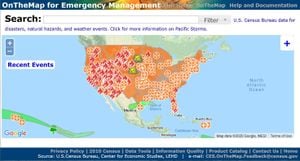February 2025 is approaching, and with it rolls out the waves of economic forecasts and analyses from various institutions eager to shed light on the forthcoming months. Economists and analysts are piecing together data, aiming to identify trends and provide insights on potential economic trajectories amid uncertainties.
These forecasts arrive amid global economic conditions marked by recovering inflation rates and shifting geopolitical landscapes. The economic forecast from the Federal Reserve indicates continued growth but tempered by potential interest rate hikes. The Fed's stance aims to balance inflation control with supporting economic recovery.
Similarly, according to data from The World Bank, several countries might experience fluctuated growth rates due to varying recovery speeds post-pandemic. While some sectors are rebounding, others are still grappling with pandemic repercussions. This disparity is most visible between advanced economies and developing nations.
A notable aspect of the February 2025 economic forecasts revolves around consumer behavior. Experts predict shifts arising from changes in disposable income as inflation pressures weigh on household budgets. According to Morgan Stanley, households may adjust spending habits, reflecting changes as people prioritize essentials over non-essentials.
Global supply chains continue to pose challenges, affecting market access and prices. Supply chain disruptions have forced businesses to rethink their logistics strategies. A report from Deloitte highlights how companies might seek local suppliers to mitigate these risks, thereby stimulating local economies.
Another significant variable is the prospect of new fiscal policies aimed at bolstering economic recovery. President Biden's administration is poised to introduce measures focusing on infrastructure investments as part of its broader economic strategy. Economic experts believe these fiscal initiatives may yield positive long-term effects on job creation and economic stability.
Hello from the Climate Policy Institute also indicates climate change discussions gaining traction within economic forecasts. Economists warn about the potential long-term economic costs linked to climate-related disasters. Mitigation efforts could open new markets but require substantial investment upfront.
Another noteworthy element of the upcoming forecasts involves the tech sector. Analysts from Goldman Sachs expect continued growth driven by advancements and consumer adoption of technologies, particularly within AI and renewable energy sectors. The tech industry's resilience positions it as both a driver of innovation and economic recovery.
Right now, sectoral disparities remain prevalent. The travel and leisure industries are slowly recovering but still facing challenges from altering consumer behaviors and potential policy shifts affecting international travel. Analysts are monitoring these sectors closely to gauge their recovery speeds and impact on overall economic growth.
The labor market remains mixed, with job growth projections indicating slow recovery. According to Bloomberg Economics, workforce participation is gradually increasing, but skills mismatches could hinder more rapid growth. Experts expect continued adjustments as sectors adapt to new economic realities post-pandemic.
Monitoring inflation data is also of utmost importance. Analysts warn inflationary pressures could lead to central banks tightening monetary policy sooner than expected, influencing borrowing costs and potentially curbing consumer spending—a delicate balance to maintain.
Investors are observing trends across various asset classes, from stocks and bonds to real estate. The potential for volatility is heightened as macroeconomic data points continue to evolve. A report from J.P. Morgan emphasizes the importance of diversified investment strategies amid uncertainty stemming from global factors.
The overall sentiment among economists remains cautiously optimistic. The combination of returning consumer confidence, fiscal measures from governments, and advancements particularly within technology and renewable energy sectors sets the stage for potential growth—but the path is fraught with challenges.
For every positive outlook, there lies uncertainty stemming from geopolitical tensions, climate concerns, and inflationary pressures. The economic forecasts set for February 2025 reflect not just numbers and statistics but also the narratives behind them: individuals making decisions, companies adapting to transformations, and nations grappling with their roles on the global stage.
These forecasts are incumbent with myriad factors and anticipated events, aiming to purport real solutions for future economic stability. How governments, businesses, and individuals respond as February 2025 approaches will shape the economic contours for the coming year.



